
The Greek island of Patmos in the Aegean Sea is best known as the location where the Apostle John received and wrote the visions found in the Book of Revelation of the New Testament.
Ancient Greek Mythology
According to ancient Greek mythology, Patmos used to be at the bottom of the sea. It could only be seen when the moon shone above it. One night, the Greek goddess Artemis noticed the small island glistening beneath the water due to the moon’s rays.
Artemis instantly fell in love with it and desired to make it her own. Recognizing that she lacked the strength to raise it from the bottom, she communicated her thoughts to her twin brother Apollo.
Apollo approached his father, Zeus, who promised to help. Zeus sought permission from his brother, Poseidon, the powerful and feared god of the sea, who was uninterested in the island and gave his approval.
Artemis then persuaded some of the residents of the area around Mount Latmos to relocate to the island, which they did in order to please her. The residents named the island Litois in honor of the goddess Artemis, who was also known as Litoida because she was the daughter of Lito.
Greek Island of Patmos known as the island of the Apocalypse
Patmos is now known internationally as the “Jerusalem of the Aegean,” or the “Island of the Apocalypse,” because this is where the Book of Revelation was written by Saint John, who found refuge on the island in the 1st century AD.

John had been exiled to Patmos by the Roman Emperor Domitian. The island was used as a place of exile by the Romans due to its remoteness and its precipitous, forbidding cliffs.
The Book of Revelation was written in 95 AD in the Holy Cave of the Apocalypse, where Saint John heard the voice of God talking to him, according to ancient beliefs.
The cave was later turned into a place of worship, and it is still open to travelers, who are often Christians going on pilgrimage.
It is considered to be one of the most important religious destinations on the globe due to its association with the Book of Revelation. Patmos offers both devotion and mysticism, inviting everyone who visits on a spiritual journey.
At the same time, the island impresses travelers with its many cultural traditions, charming villages, and great natural beauty.
A divine and otherworldly place, it invites everyone to come and encounter its undeniable spiritual, mystical aura.
Sightseeing on Patmos
Saint John Monastery
Built in 1088 by Christodoulos Latrinos, St. John Monastery (Agios Ioannis Theologos), sits high on the hill above Chora, serving as the most important religious and cultural center on the island. It is visible from every part of Patmos.
Buildings of different ages form the Monastery, which contains 99 cells and ten chapels, as well as a library housing 890 handwritten codices and 13,000 documents about the history of the site.
The Cave of the Apocalypse
St. John, known in the Bible as the “disciple Jesus loved,” adopted this very cave as his home after his exile by the Roman emperor Domitian. Consequently, the cave became the center of his great revelation, which he dictated to his follower Prohorus. This became the last book of the Bible, the Book of the Apocalypse (meaning “unveiling,” or “revelation”).
The cave was declared a World Heritage Site by UNESCO in 1999.

Today, a spiritual leader or a monk can be found sitting on the rock outside John’s cave, narrating the story of the Apocalypse and explaining how the book came to be written to tourists.
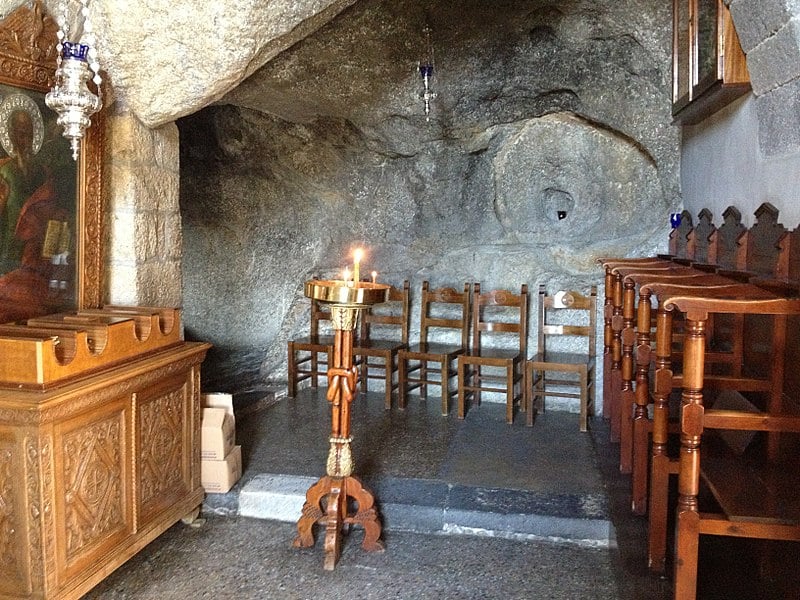
The Monastery of Zoodochos Pighi
With a name meaning “life-giving source,” this monastery was founded by the monk Parthenios Pagkostas under the patriarch Timothy the Second.
The Convent of Zoodochos Pigi, located southwest of the main Monastery, was built in 1607. Presently, fifteen nuns busy themselves with embroidering clerical vestments in the convent, as well as creating other masterpieces of needlework.
Nuns live under strict rules at the convent but are also involved in social welfare activities. A notable ceremony in this convent is their celebration on the Friday after Easter.
Patmian Ecclesiastic School
Founded by Makarios Kalogeras in 1713, the Patmian School is located near the Cave of the Apocalypse on Patmos Island. Also known as the General School of the Nation, the foundation of the Patmian Ecclesiastic School was the most significant event of the 18th century on Patmos.
Makarios Kalogeras undertook philosophical and theological studies in the patriarchal school of Constantinople. However, Makarios’ desire to teach caused him to return to Patmos and establish this school so close to the Cave of the Apocalypse.
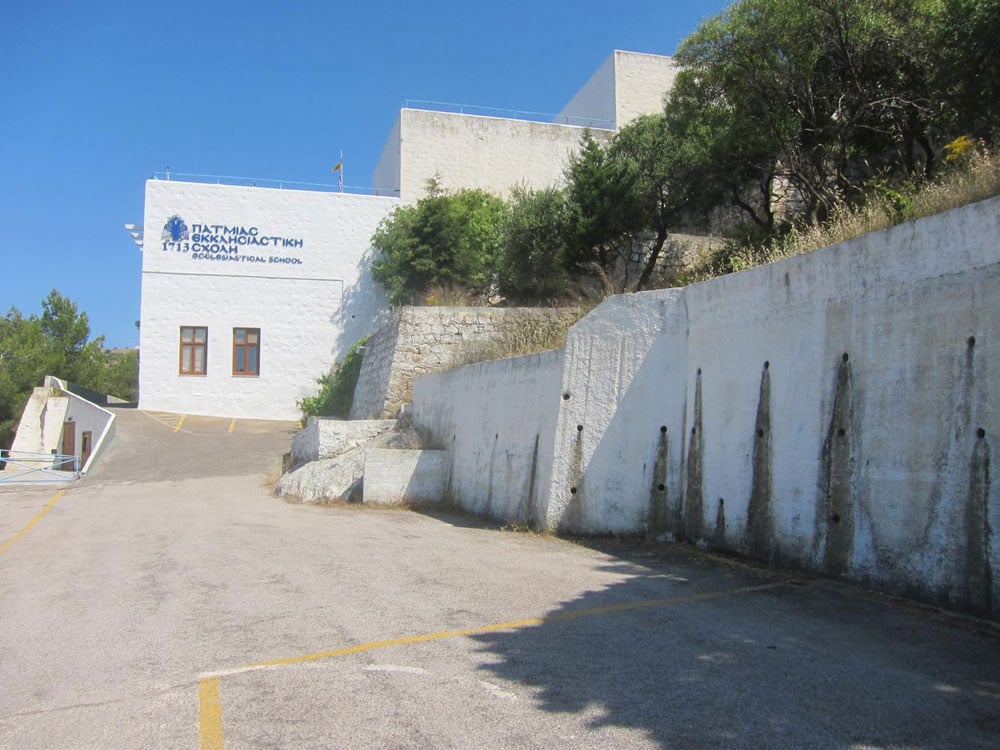
Ecclesiastical Museum
A small but fascinating museum, the Ecclesiastical Museum of Patmos is located on the premises of the Monastery of Saint John atop of the town of Chora, the capital of the island. It contains valuable manuscripts, priestly vestments, portable icons from the Byzantine and post-Byzantine times, and other items utilized in the Divine Liturgy.
The eleventh-century icon of Saint Nicolas is amongst the most important icons in the Ecclesiastic Museum on Patmos.
Folklore Museum
The Folklore Museum is a small facility that is accommodated in the residence of the Simantiri family in Chora on Patmos. Constructed in 1625 by craftsmen from Izmir, (formerly Smyrna), Turkey, this elegant mansion is still inhabited to this day.
Its lavish collection includes items from the 14th century through the 19th century. Amongst them, visitors can see old photographs, wooden furniture, Russian-style icons, and paintings.
The Villages of Patmos
Skala Village
Located just at the center of the island, Skala is the largest settlement and main port of Patmos. This lovely place is constructed around the charming port and is comprised of the business district of Patmos.
A number of sights in the settlement of Skala are absolutely worth a visit: among them the church of Panagia Koumana, the ruins of an ancient acropolis, and the seventeenth century Church of Agia Paraskevi of Cavos.
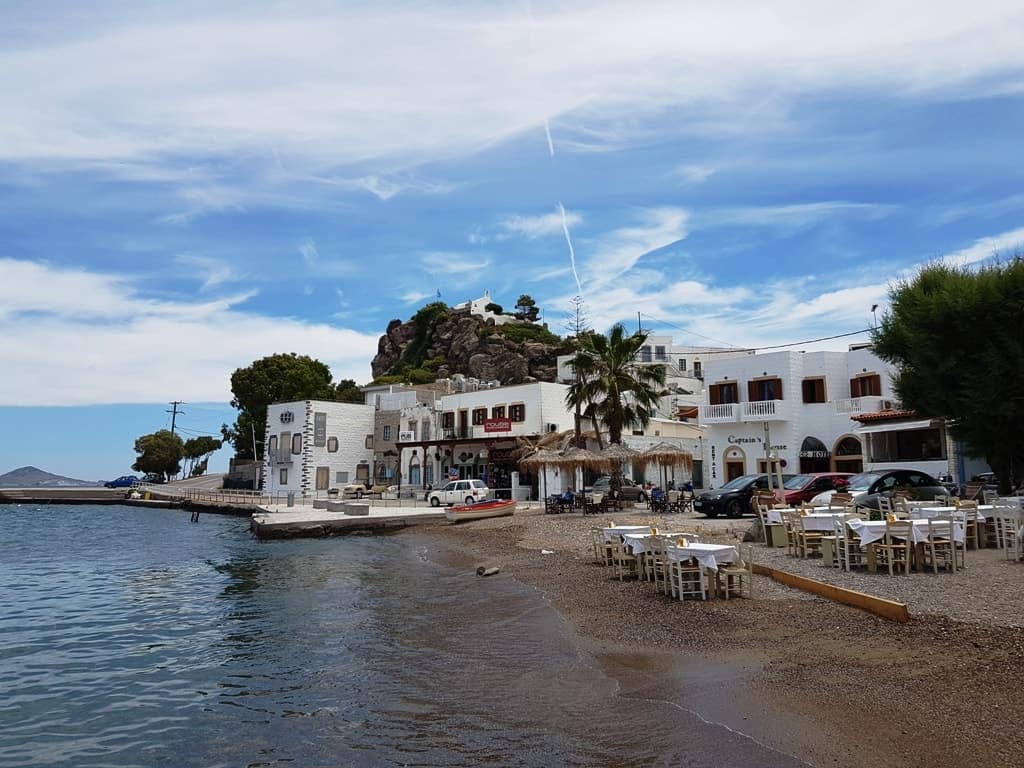
Chora Village
Found in the south-central part of the island, Chora is the capital of Patmos and a few kilometers south of Skala, the main port of Patmos. This traditional settlement was constructed during the 12th century around the impressive Monastery of Saint John the Theologian.
The settlement of Chora flourished between the 16th and 17th century. During that time, captain’s homes and beautiful mansions were built for wealthy families of that era.
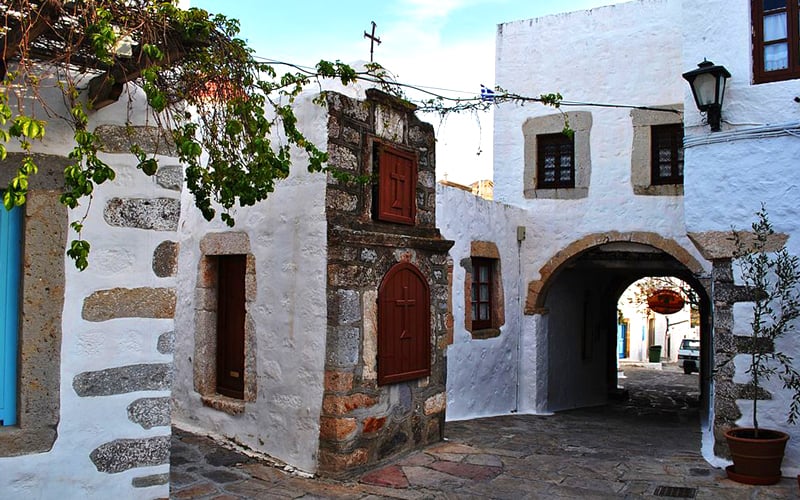
Swimming and sunbathing on Patmos
Kampos
The beach at Kampos contains fantastic fish tavernas and sea sport facilities. This lovely bay is located on the northern side of the island.
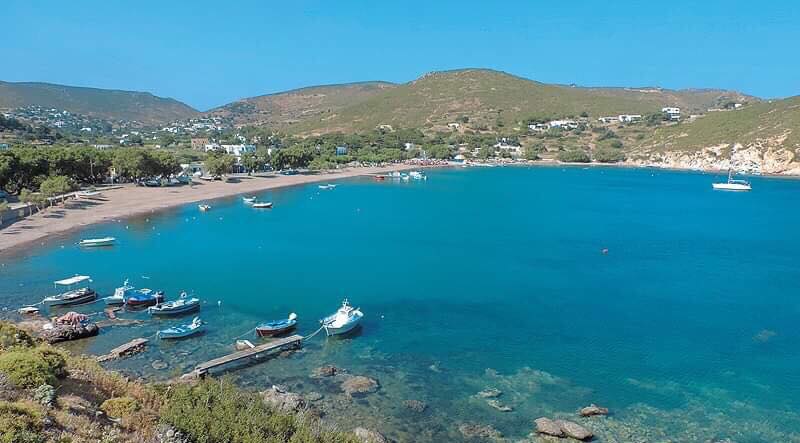
Psili Ammos Beach
The beach of Psili Ammos (meaning “fine sand”) is only accessible by boat. This picturesque cove has soft, golden sand and clean waters with many tamarisk trees providing shade.

Vagia Beach
Vagia Beach is a pebble beach surrounded by shade trees, allowing for a quiet and peaceful time for swimmers and sunbathers. It is said to have the coldest waters on Patmos and is located 11 km southeast of Skala.
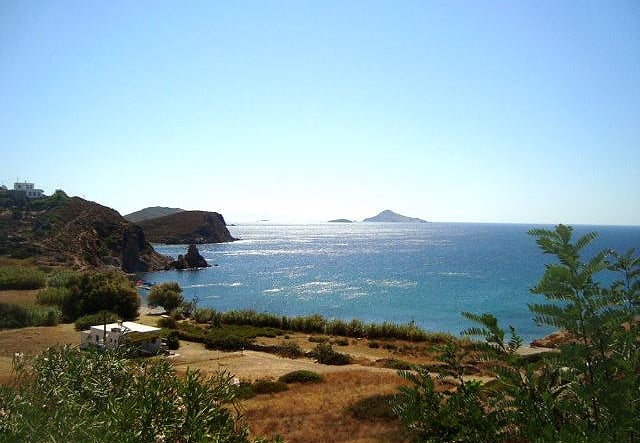
Lambi Beach
Lambi beach is covered with unusual, multi-colored pebbles. The name Lambi means shining, which was given because of the sun that reflects against the beautiful stones and the crystal waters of the bay.
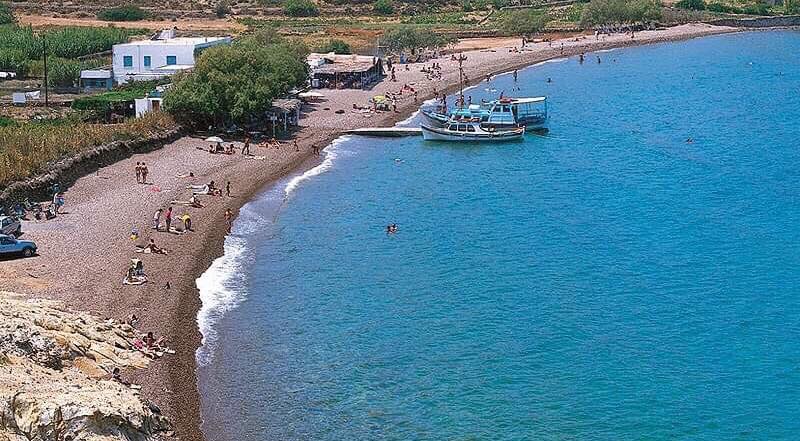
The small, mainly uninhabited islets of Arkoi are also definitely worth visiting. Catch a boat from the settlement of Skala, and make sure you visit Marathi for delicious fresh fish and crystal-clear waters.
See all the latest news from Greece and the world at Greekreporter.com. Contact our newsroom to report an update or send your story, photos and videos. Follow GR on Google News and subscribe here to our daily email!



